June 2022 - You are accessing an old version of our website. The SDGs Voluntary Commitments have been migrated here: https://sdgs.un.org/partnerships
You will be redirected to the new Partnership Platform in 10 seconds.
June 2022 - You are accessing an old version of our website. The SDGs Voluntary Commitments have been migrated here: https://sdgs.un.org/partnerships
You will be redirected to the new Partnership Platform in 10 seconds.
Founded in 2014, the Jinan Eco-cultural Tourism Zone has promoted the Chinese historic and cultural values while conserving the natural and ecological environment. Thanks to such integrated development of the culture, tourism and ecology sectors, the Zone has fostered the preservation of local historic and cultural heritage, improved the ecology and human habitat, fueled robust socio-economic growth and created a replicable model of local sustainable development. The Jinan Eco-cultural Tourism Zone affords an opportunity to showcase local implementation of the 2030 Agenda and foster peer learning towards the overall inclusive impact of Eco-cultural-tourism integrated into the local socio-economic development.
Create a historical-cultural demonstration park with inclusive socio-economic impact: We aim to further develop the Eco-cultural tourism sector and turn it into a key driver of local inclusive economic growth, in line with SDG 8. da. Significant efforts will be made to foster the micro- and small- businesses with the total number of such businesses in the park ultimately exceeding 100, creating job opportunities for local youth and women. Build an environment-friendly city: We integrate ecological considerations with the development of the park, by effectively controlling rainwater runoff and encouraging natural water storage, natural infiltration and natural purification. The city’s anti-flooding capability has been enhanced thanks to this balanced approach. It is estimated that 70% of the rainwater has been locally collected and recycled.
Improve the local ecology: The development of the park has been part of the Three-Year Action Plan for the Protection of Changhu Lake, achieving the objectives of “smooth lake-water flow, clear water body, greening along the lakeshore and beautiful landscapes”. 90% of the surface water in the zone and its surrounding areas has met the relevant national water quality standards.
Specifically, this practice corresponds to the following 7 SDGs and their relevant targets:
Goal 1- End poverty in all its forms everywhere.
Goal 6- Ensure availability and sustainable management of water and sanitation for all.
Goal 8- Promote sustained, inclusive and sustainable economic growth, full and productive employment and decent work for all.
Goal 9- Build resilient infrastructure, promote inclusive and sustainable industrialization and foster innovation.
Goal 11- Make cities and human settlements inclusive, safe, resilient and sustainable.
Goal 12- Ensure sustainable consumption and production patterns.
Goal 15- Protect, restore and promote sustainable use of terrestrial ecosystems, sustainably manage forests, combat desertification, and halt and reverse land degradation and halt biodiversity loss.
Main beneficiaries: all residents in the Jinan Eco-cultural Tourism Zone, residents of Jingzhou District and Shashi District. Main implementers: the administrative committee of Jinan Eco-cultural Tourism Zone as the main institution of supervision; Jinan Town and Fenghuang Office as the main accountable implementers; administrative villages as the local managers; farmers as the direct beneficiaries; Haizihu Investment Company and other third-party organizations as the service providers.Multi-stakeholder Innovative partnerships: Established an innovative investment and financing platform in cooperation with Xi'an Qujiang Group; co-developed projects with the German Energy Agency (DENA) and the French Centre Scientifique et Technique de Batiment (CSTB).
Great efforts have been made to foster the cultural-tourism sector. By identifying the local cultural elements and water resources, we implemented a sustainable development strategy underpinned by its three pillars. We reached out to prominent cultural investors such as Shenzhen Huaqiang Group and Xi’an Qujiang Group, as well as those partners mentioned above, with an aim to inject vitality into the Eco-cultural tourism sector. 10 projects are under construction with investment of at least 1 billion RMB each. Upon completion, the park is projected to receive additional several million tourists every year, and create nearly 1000 new jobs for the local community.
We have been striving to build a new model in urban development by developing sustainable infrastructure in support of the park and the city. In transport, we have built an innovative transport system featuring pedestrian-friendly sidewalks, interlinked networks and multi-modal travel. For example, on both sides of the trunk roads, we have planned 15-20-metre-wide green belts to boost green mobility. We have also cooperated with German businesses and other companies in the fields of water pollution control, green energy technology application and energy efficiency of buildings, with the purpose of improving equipment efficiency and lowering energy consumption of buildings. In terms of landscaping and ecological space design, we have put emphasis on a natural landscape, while adding aquatic plants to create a more appealing eco-landscape.
We have made substantial efforts to restore and rehabilitate the ecosystem. We launched an integrated initiative in the Changhu Lake area, closed 144 factories and aquatic/livestock farms that failed to meet the water discharge standards. We kicked off another peripheral-Changhu-Lake wetland restoration project with an estimated investment of 3 billion RMB. This approach helps address the root causes of flooding for the residents living nearby and significantly reduce economic losses caused by water-related disasters.
We have been working wholeheartedly to protect and sustain the city’s cultural heritage and relics. We explored diverse innovative models to highlight the cultural relics using approaches such as relic presentation, simulative presentation, labeled presentation and reconstructed presentation. As an integral part of the Jinan Eco-cultural Tourism Zone, we built the Chu-Jinan National Archeological Heritage Park and Yingcheng Culture Park, and developed cultural and creative products, cartoons, animations and video games. We carried out an “internet + Chu culture” project to promote full-media communication and multi-form presentations by merging the internet platforms with new O2O business models. We advocated the model of “intangible cultural heritage + school education”, opened up handicraft training workshops and relocated and reconstructed the Jingzhou Intangible Heritage Preservation Institute.
We have been committed to improving the benefits to local community. We sought to alleviate poverty and enhanced access to services in the fields of education, health care, and successfully helped thousands of households rise above poverty. We implemented “three major eco-projects”, including retrofitting 6208 toilets in the rural areas, building one wastewater treatment plant, and an urban-rural domestic waste decontamination system.
Through this initiative, implemented in line with the 2030 Agenda and the SDGs, we have achieved a transformation that reflects the value and principles of sustainable development. As a result, the share of agriculture and industry in the economy of Jinan Cultural Tourism Zone has fallen from 90% before the establishment of the Zone to the current 50% level. Meanwhile, eco-cultural tourism saw its share jump from less than 2% to 40% and has become a mainstay for the local economy. At present, the Zone has accumulatively invested 30 billion yuan in the fixed assets of the eco-cultural tourism sector with 30 projects under construction. Over the years, a group of front runners have emerged from the cultural tourism sector, cultural exhibition sector, film and TV production sector and the culture and creativity sector.
The living environment has significantly improved, with new housing made available. The city transport system has been transformed, featuring a network of public transportation, 18 trunk roads and feeder lines, and 52 minor roads, allowing for an accessible and multi-modal speedy public transport system. 2 city parks and 3 wetland parks have been opened to the public creating an enjoyable and entertaining environment. In terms of water quality, the main rivers were cleaned up, and upgraded from being “inferior water bodies” to “excellent water bodies”. The coverage of wastewater treatment facilities for farmers increased remarkably. Taking Jinan Town as an example: in 2013, only 29% of the farmers had access to wastewater treatment services. In 2018, this ratio rose to 98%.
The traditional culture has been highlighted. The Jingzhou quarters with Chu-Jinan Old Town as the core have been listed as a project for joint preservation and development between the National Cultural Heritage Administration and Hubei Provincial Government. This represents a key initiative for the preservation of the major heritage sites in southern China. The Jingchu Intangible Heritage Preservation Institute, which serves as an important research body of the Chu culture, has been relocated back to Jinan for reconstruction and has also launched the Chu Culture Research Institute in conjunction with Yangtze University. Thanks to those efforts, our Zone has grown into an important center for research, promotion and advocacy of key elements of Chu culture across China. Chu bamboo calligraphy has entered campuses, Chu embroidery has become a decorative feature in ordinary households.
The Happiness Index of local residents has increased. People’s income has risen. The infrastructure construction has generated 10,000 jobs locally, the cultural-tourism projects 6000 jobs, the hotel and accommodation business 7000 jobs, and the catering business another 5000 jobs. The public cultural life has been enriched. The second Hubei Provincial Horticulture Expo and the Park of 800 Years of the Chu Kingdom brought joy to the local public life. The ongoing projects of the Chu Culture Museum and Arts Center will soon offer new opportunities for people to appreciate the Chu cultural achievements and beauty.
Enabling factors: First, abundant historical and cultural resources such as the ancient relics and tombs, in particular the 3 national-level cultural heritage sites under state protection. These are the foundation for an integrated cultural and tourist development. Second, international cooperation and co-development. The Sino-German Eco-city and Sino-French Eco-city have become great opportunities to drive international collaboration and successfully enhanced the quality of the administration in the Zone. Third, cluster effects. The introduction of leading domestic cultural investors such as Shenzhen Huaqiang Group and Xi’an Qujiang Group have generated remarkable clustering effects.
Constraints: First, the cultural tourism projects usually involve a large front load investment and long repayment cycle. Take the Huaxia Historical, Cultural and Technological Park and the Jingchu Culture Park for example. They require investments of at least 1 billion RMB each, and a minimum construction cycle of 3 years before being able to generate benefits to the local communities. Second, daunting pressure on the local municipality to provide supporting facilities. Before any cultural-tourism project can settle in, the local municipality must provide road access, water, electric power and other infrastructure that require tremendous and continuous policy support and financial assistance from the local city. Third, difficulty in resettlement. As such projects usually give rise to necessary resettlements, this requires effective outreach, consultation, communication and persuasion with active participation of local communities whose support is of utmost importance.
So far the Eco-cultural Tourism model has shown strong potentials in sustainability and replicability.
Its sustainability is two-fold. First, this area is designated as an eco-cultural and sustainable tourist zone committed to developing eco-cultural-tourism, a sector which is showing long-term sustainability. Second, we have laid down the “ecological red line” for this area and sought to value water in multi-dimensions, by taking the initiative of “green rice, green aquatic food, green paddy field, and green water body”. Thanks to this initiative, an integrated green rice plantation and aquatic farming system has formed in which high quality paddy fields yield high quality rice and a beautiful natural environment for eco-cultural tourism.
Its replicability is three-fold. First, it is a relatively small geographical area with a small population, conducive to scaling up and replicability. Second, to achieve integrated development of healthy ecology, inclusive society, culture and sustainable tourism, we have learned that the key is adopting an inter-linked, balanced and integrated strategy, anchored on the principles and values of sustainable development and multi-stakeholder partnerships. Therefore, the same approach may be true and highly relevant to other cities. Third, currently, the “culture+” approach appears to be a popular model for pursuing sustainable development as culture is both universal and unique to local areas and can facilitate multi-sectoral, inter-linked sustainable development strategies and be replicated across a large scale.
The Jinan Eco-cultural Tourism Zone of Jingzhou City, amidst all the activities it has engaged in, has succeeded in showcasing the impact of Eco-cultural tourism in promoting sustainable development, consistent with the principles, values and approaches of the 2030 Agenda. Based on China’s National Plan for the Implementation of 2030 Agenda for Sustainable Development, we have aligned the 2030 Agenda with our mid- long-term plan by integrating the SDGs objectives into our own local development plan, bearing in mind the three dimensions of sustainable development. By doing so, we hope to create a Jinan model for sustainable local development to share with the rest of the world. Looking ahead, we will collaborate with the Institute for Sustainable Development Goals at Tsinghua University and engage in a research “Progress Report on the Implementation of 2030 Agenda for Sustainable Development by Jinan Eco-cultural Tourism Zone of Jingzhou City”. We will continue to explore specific innovative pathways for translating the 2030 Agenda into practice on the ground.
Second, we plan to set up a local sustainable development forum for peer learning. To this end, we will explore the feasibility of building Jingchu International Convention Center for hosting the local sustainable development forum and for capacity building and South-South cooperation, equipped with a multi-functional reception center featuring Jingchu Expo and Changhu Lake eco-education segments. We have engaged AECOM, the American company responsible for designing the Beijing Yanqihu Project, to develop an eco-friendly, socially inclusive and economically robust strategy, master and conceptual plan, and architectural design. Third, we will play a proactive role in supporting forum events and discussions to advance mutual learning and sharing of experiences in advancing local SDG action. With the sustainable development forum as the central focus, we will invite domestic and foreign scholars and experts to engage in such interactive discussions and capacity-building on the implementation of the 2030 Agenda.
1. 70 Billion Yuan to Create the Hub of Tourism in Central China by Jingzhou City: 10 Cultural Tourism Projects in 225 Square Kilometers (Xinhuanet, August 11th, 2018) http://www.hb.xinhuanet.com/2018-08/11/c_1123254775.htm
2. More than 10 Billion Yuan Investment in the Cultural Tourism Sector: Jingzhou Poised to Alter the Hubei Provincial Tourism Market (China national radio, Sept. 11th, 2017) http://www.cnr.cn/hubei/jmct/20170911/t20170911_523943346.shtml
3. Jingzhou Hand-in-hand with Xi’an to Develop the Jinan Eco-cultural Tourism Zone ( Sina, Dec.19th, 2014) http://hb.sina.com.cn/news/j/2014-12-19/detail-iawzunex7183690.shtml
4. “Culture+” Model Used by the Jinan Eco-cultural Tourism Zone to Create a New Identity for Jingzhou http://news.cnhubei.com/xw/hb/jz/201608/t3682826.shtml
5. On the Way to a Role Model of Green City Development in the 21st Century: A Close-up of Progress towards Eco-civilization in the Jinan Cultural Tourism Zone (Jingzhou Daily, Oct. 24th, 2018)

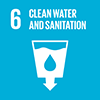
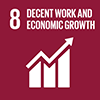
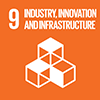
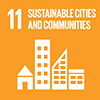
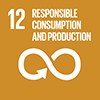
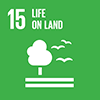
 Start: 02 June, 2014
Start: 02 June, 2014 Completion: 26 February, 2019
Completion: 26 February, 2019